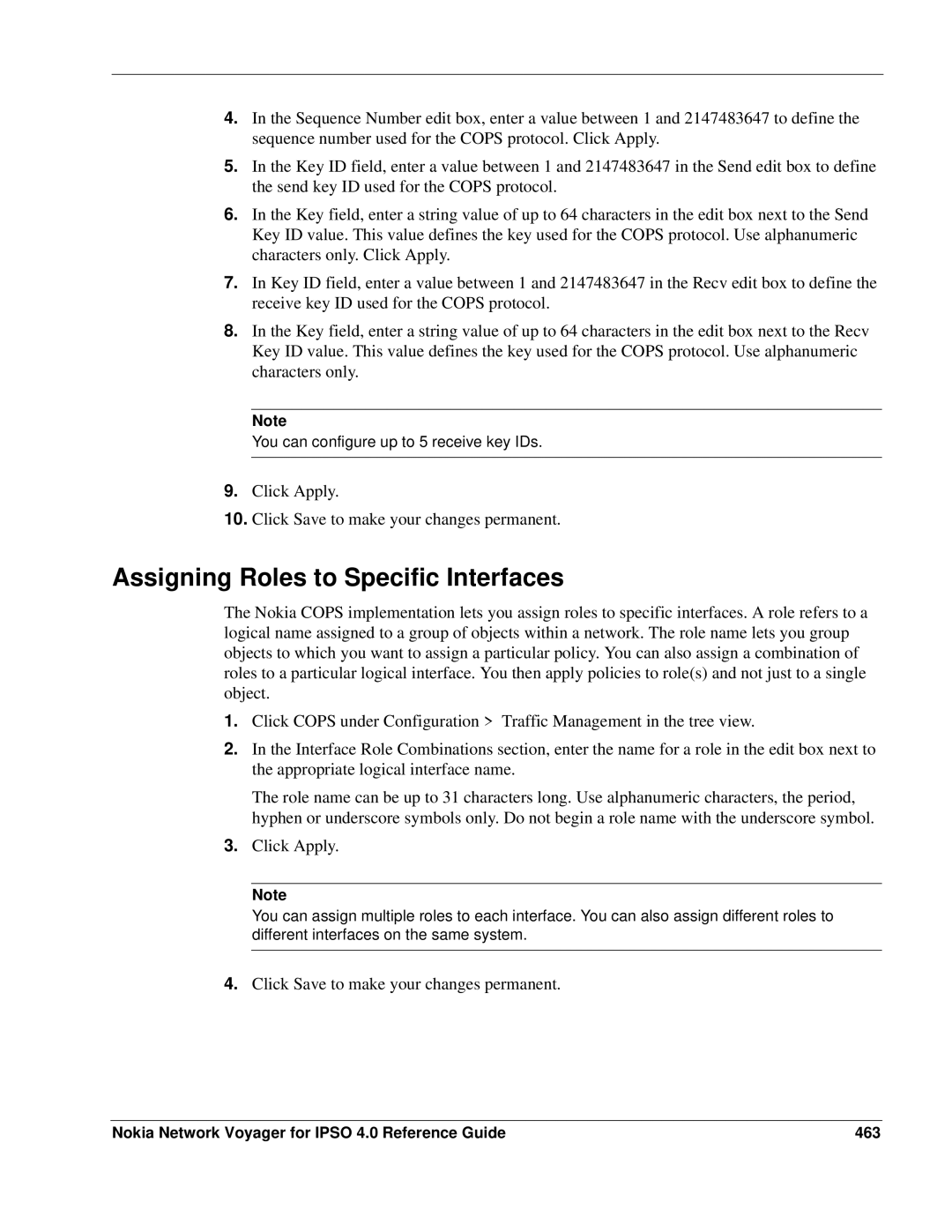
4.In the Sequence Number edit box, enter a value between 1 and 2147483647 to define the sequence number used for the COPS protocol. Click Apply.
5.In the Key ID field, enter a value between 1 and 2147483647 in the Send edit box to define the send key ID used for the COPS protocol.
6.In the Key field, enter a string value of up to 64 characters in the edit box next to the Send Key ID value. This value defines the key used for the COPS protocol. Use alphanumeric characters only. Click Apply.
7.In Key ID field, enter a value between 1 and 2147483647 in the Recv edit box to define the receive key ID used for the COPS protocol.
8.In the Key field, enter a string value of up to 64 characters in the edit box next to the Recv Key ID value. This value defines the key used for the COPS protocol. Use alphanumeric characters only.
Note
You can configure up to 5 receive key IDs.
9.Click Apply.
10.Click Save to make your changes permanent.
Assigning Roles to Specific Interfaces
The Nokia COPS implementation lets you assign roles to specific interfaces. A role refers to a logical name assigned to a group of objects within a network. The role name lets you group objects to which you want to assign a particular policy. You can also assign a combination of roles to a particular logical interface. You then apply policies to role(s) and not just to a single object.
1.Click COPS under Configuration > Traffic Management in the tree view.
2.In the Interface Role Combinations section, enter the name for a role in the edit box next to the appropriate logical interface name.
The role name can be up to 31 characters long. Use alphanumeric characters, the period, hyphen or underscore symbols only. Do not begin a role name with the underscore symbol.
3.Click Apply.
Note
You can assign multiple roles to each interface. You can also assign different roles to different interfaces on the same system.
4.Click Save to make your changes permanent.
Nokia Network Voyager for IPSO 4.0 Reference Guide | 463 |
